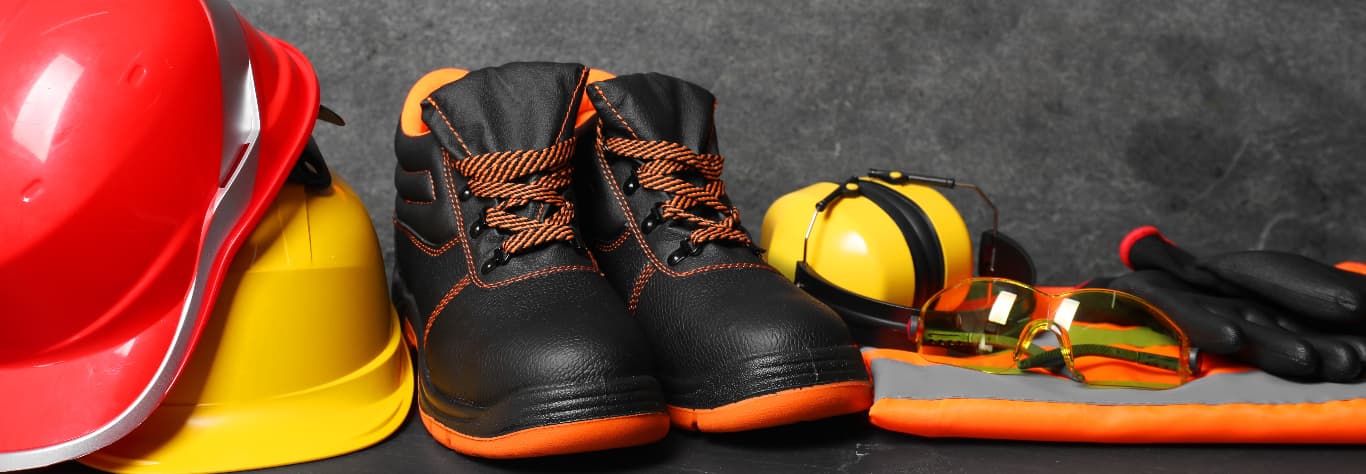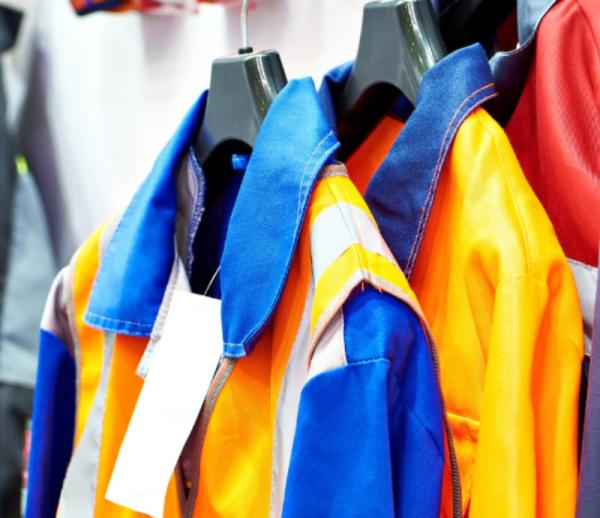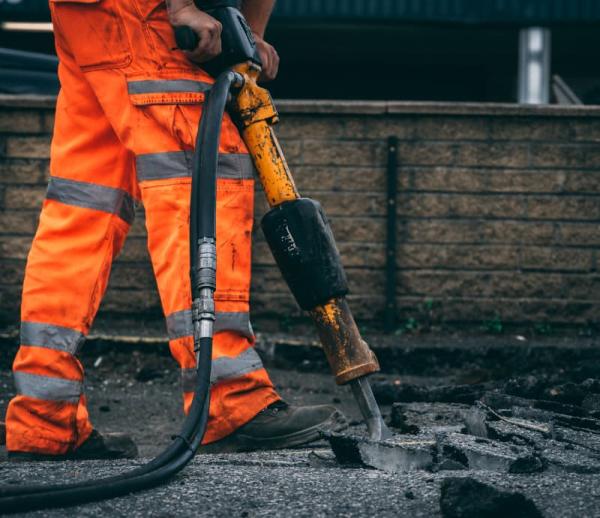Cotton as a classic foundation
Cotton has been a mainstay of clothing for centuries, and for good reason. It’s a natural fibre that’s soft, breathable and comfortable against the skin – making it a great choice for garments worn close to the body like T-shirts, polos, and lightweight shirts. Cotton enables air to circulate, so it helps keep the wearer cool, which is particularly important in warmer environments or roles that require physical effort.
It’s also a good option for people who have sensitive skin, since it’s non-irritating and naturally hypoallergenic. It’s not quite as resistant to abrasion as some other fabrics, so it’s rarely used for heavy-duty outer layers – which goes some way to explaining why it’s in such heavy demand for comfortable inner layers instead.
Polyester’s impressive durability
Polyester is a synthetic fibre that’s known for being strong, quick-drying and highly resistant to shrinking, creasing and abrasion. All these characteristics make it ideal for workwear that needs to cope with tough conditions, repeated wash cycles and regular exposure to dirt or moisture.
It’s often chosen for outer layers such as waterproof jackets, hi-vis clothing and reinforced trousers. Polyester is also less absorbent than cotton, which means it dries quickly and holds less sweat during physical activity. It performs well in high-turnover settings where uniforms are washed frequently or exposed to grime, oil or chemicals on a daily basis.
Polycotton blends
To get the best of both worlds, many workwear garments use a blend of polyester and cotton – often referred to as polycotton. This combination creates a fabric that feels soft and breathable like cotton, while also being long-lasting and hard-wearing thanks to the polyester component.
The balance between comfort and resilience makes polycotton suitable for a huge range of roles, from logistics and warehousing to manufacturing and site trades. It also tends to wrinkle less than pure cotton and resists pilling, making it a lower-maintenance choice for employers who need uniforms to stay looking tidy after repeated use.
The handy flexibility of elastane
Elastane (sometimes labelled as Lycra or Spandex) is the secret ingredient in stretch workwear. A small percentage of elastane blended into a fabric gives it noticeable flexibility and stretch, which can make a big difference when you’re bending, lifting or crouching throughout the day.
It’s commonly used in fitted garments like slim-cut trousers or jackets that need to move with the body without pulling or pinching. Some designs use targeted stretch zones – such as around the knees or waist – to enable extra movement without altering the overall shape or structure of the clothing. This makes a big difference if you need extra freedom to move when you’re active on the job.
Wool’s place in premium protection
Although not as commonly used across standard workwear ranges, wool still has a respected place – especially in premium or specialist gear. Its natural insulating properties make it excellent for cold environments, and it also offers some inherent resistance to flames and static, which is useful in certain industries.
You’ll find wool most often in thermal base layers, socks, or insulated outer garments designed for people working outdoors in freezing temperatures. It regulates temperature efficiently and keeps warmth in even when damp, which is why it remains a staple in cold-weather workwear. Wool can also be blended with synthetics to improve durability while retaining its natural benefits.
So… how do you choose the right material for the job?
There’s no one-size-fits-all answer when it comes to workwear fabrics. Each material brings its own strengths, and the right choice depends on your working environment, the type of tasks you’re doing, and how often the clothing needs to be washed or replaced. Understanding the pros and cons of each fibre helps you make better decisions – and get gear that lasts longer, performs well and feels right while you work.
It’s also worth considering the season, level of physical activity, and any relevant safety standards when deciding what to wear. Matching the right material to the job can lead to better comfort, longer garment life and increased safety for your team.
Looking for advice on the right fabric for your team? Feel free to get in touch with our team here at City Workwear – we’ll always be able to provide you with answers in as much or as little detail as you need.
And if you ever need any advice on customising your workwear, our team are all too happy to provide any advice you need there too! All of our customisations are done in-house using our experienced team of designers and print machinists, so you can liaise directly with us to get exactly what you’re looking for. We also provide a FREE workwear printing and embroidery service and FREE delivery for orders over £150!
Feel free to take a look around our website to see what you can find, or alternatively give our team a call on 0330 004 0440, and we’ll be happy to help however we can!






